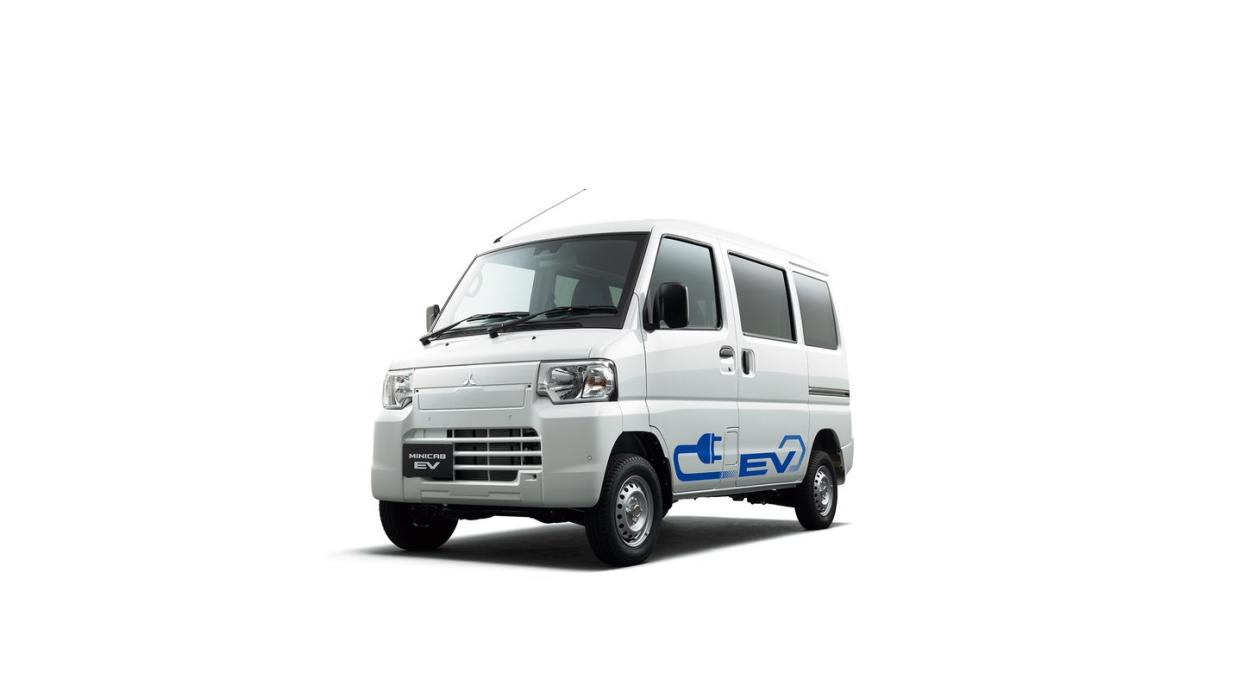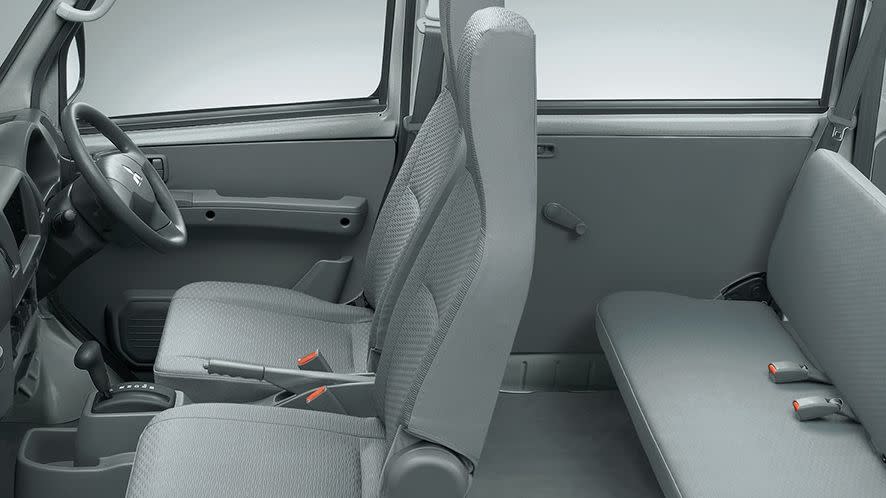Mitsubishi’s Latest EV Is Not Very Futuristic

The new Mitsubishi Minicab EV, launched in late 2023, features a 20-kWh battery, giving it a range of 111 miles in the WLTC cycle.
Produced in Japan and Indonesia, the electric kei car is offered as a two-seater or a four-seater, and starts at $16,320.
The boxy Minicab EV, with an overall length of 133 inches, is mostly aimed at commercial customers.
In the realm of EVs, we tend to take sleek, aerodynamic designs for granted these days, along with infotainment screens almost as large as TVs.
But Mitsubishi's latest Minicab EV is none of those things.
In fact, it doesn't even look like it was designed this century.
The Minicab EV, of course, is a kei car, so it's aimed at certain vehicle dimension requirements in Japan, with the kei car class having launched decades ago aimed at a particular compact vehicle tax class. And it's based on the Minicab-MiEV, which itself was launched on a pre-existing platform back in 2012.
As you may have guessed by now, the range of the Minicab EV is not long, a direct result of its particular size requirements; an overall length of 133 inches provides enough space for just 111 miles in the WLTC cycle.
Mitsubishi notes that this is actually a gain of 35% compared to the previous model, with the battery having grown by 25% to 20.0 kWh.
Among other things, this makes it among the smallest battery placed into a production EV today. That's a credit to the rather light chassis, which actually weighs less than a new Mini Cooper Electric by almost a third.
The good news is that it takes just seven-and-a-half hours to charge the battery with a typical wall outlet, with the battery also being receptive to fast-charging. (Just not too fast).
"By leveraging the expertise gained through the development and maintenance of the Minicab-MiEV, the new Minicab EV offers an improved cruising range as well as enhanced safety and convenience features to answer the needs of commercial customers," Mitsubishi notes.
The Minicab EV does feature some modern safety tech, if not a super large frontal crumple zone.

A lane-departure warning system is standard, along with a forward-collision mitigation system, hill-start assist, and an ultrasonic misacceleration-mitigation system. Other features include am AC power outlet in the back for various tools or appliances, as well as regenerative braking.
Clearly it's not as outdated as it looks, feature-wise.
Mitsubishi has sold around 13,000 units of the previous-gen model over the course of 12 years, so it's not exactly a high-volume model, averaging just over a thousand units a year.
Instead, the Minicab EV serves a very particular niche. Offered as a two-seater, the model starts at the equivalent of $16,320, while the four-seat version starts at $16,690.
What's more, production has also started outside of Japan, with Mitsubishi having recently kicked off assembly in Indonesia, where it's badged as the L100EV.
"With the start of our first production of EVs overseas, we hope to meet the growing demand for EVs in the ASEAN region and at the same time contribute to the country's environmental initiatives," said said Takao Kato, president and chief executive officer, Mitsubishi Motors.
The Minicab EV is not coming here, just so we're clear.
But some other electric kei car offerings actually do look modern and might make sense to some buyers in the US, especially in large cities.
The kei car craze has certainly grown stateside over the past decade, and some official dealers of Japanese brands like Honda offer imported vintage kei cars at their dealerships.
Is there a market for new kei cars in the US, or is this too niche of a segment? Let us know in the comments below.

